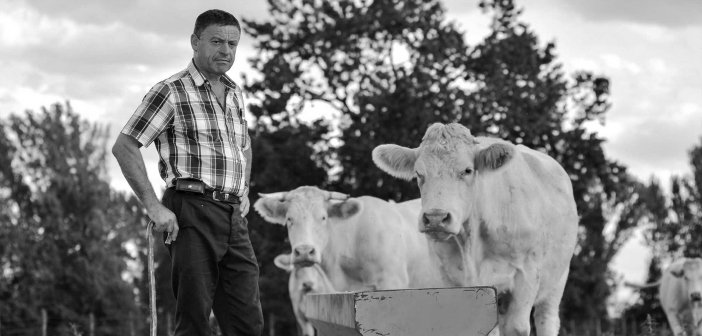Is the Back-to-the-Land Movement Experiencing a Resurgence?
The Back-to-the-Land movement emerged from the post-Woodstock era of the late-1960s and early-1970s, supported by a mostly idealistic group of people who wanted to live life more simply. Although the movement celebrated the concepts of “free love” and commune living, the essence of the movement was clear: to build and live a simpler and better way of life on the land, far from the influence and sickness of a society dependent on materialism and fuel.
The original movement petered out by the late-1970s, and the onset of energy crises, higher consumption of gas and oil, and an abundance of job opportunities firmly placed the concept of sustainable living in the past. However, the subsequent decades of a population consumed by urban living, consumerist-based, and technology-focused lifestyles is now causing a small but growing cultural backlash. With recent concerns about food safety and the growing acknowledgment and fear of climate change, Americans — mostly millennials — are returning to the land.

A Mostly Millennial Movement
The new back-to-the-land movement has a variety of labels, including “radical homemaking,” “downshifting,” and “intentional living.” But the term that seems to define the resurgence of this movement best is “homesteading.” The modern approach to homesteading is to leave behind the urban rat-race and redefine one’s life more simply. This approach includes living with purpose while remaining home-focused, frugal, and self-sufficient.
Individuals who choose to become modern homesteaders are not unlike their 1970s predecessors. They are part of a new social class that consciously and purposefully rejects materialism and consumerism for the opportunity to live more fulfilling and healthy lives.
For example, many millennials who are now part of the homesteading movement decided to walk away from a sedentary job in a cubicle, plugged into the internet and constant bombardment of digital information. Now, many of those people lease or own farms, grow produce, and are outside and unplugged more often than inside and on their smartphones. With a 2.2% increase in millennial farmers between 2008 and 2012, it appears the desire for a more agrarian life is increasing.

However, leaving behind the consumerism-driven, immediate-gratification life for sustainable living in a more rural environment is no small undertaking, and comes with its fair share of struggles. According to The Guardian, farms are expensive to operate and often require immediate capital, and medium farm incomes are expected to fall during 2019 in the US. Changing weather patterns also pose a serious challenge to successful homesteading as long-term planning and investment are harder to grasp. Additionally, many new homesteaders are also bringing heavy student debt burdens with them on their new venture, and that debt will slow and limit their ability to become part of the homesteading lifestyle.
Despite these real and daunting challenges, millennials who dream of becoming homesteaders are not dissuaded from that goal. The lure of living a life with the land is, as it was for the back-to-the-land idealists, too strong a call for the soul to ignore. The idea of living on a farm, surrounded by thousands of acres of land and living off that land has a Little House on the Prairie meets Walden vibe that is highly appealing for people who are concerned about sustainability and the environment. Some more extreme forms of homesteading include families living in the wildly popular tiny houses or living in the woods and off-the-grid entirely.
The benefits from homesteading are fairly compelling ones, at least enough to offset the challenges that can arise for millennials who are new to the movement. Here are some of the benefits of the homesteading lifestyle that are causing a larger number of younger people to take the plunge and live sustainably.
A sense of autonomy
Many millennial farmers have found the autonomy that comes with sustainable living as a prime benefit to this lifestyle. Days that begin and end outside are dictated by what the farmer chooses to do. There is visible proof of the homesteader’s accomplishments at the end of each day, whether that is a plowed field, weeded garden beds, or assisting in birthing livestock.

There’s a world of difference between sitting at a desk sending hundreds of emails and foraging for herbal medicine. The element of freedom also applies to using renewable energy sources, as many homesteaders use solar panels and wind turbines to naturally produce the energy they need for their homes.
Food safety and control
With a growing fear about food control sources, many people are turning to homesteading as a way to know where their food is sourced. What is born, raised, and grazed on the homesteader’s property is what ends up on the plate at dinner. There are no questions or worries about where the food came from or what chemicals are in it; the homesteader knows every step of the farm-to-table process, which removes the mystery, processing, and chemicals found in commercially produced foods.
Slower-paced living
Although millennials are characterised as being a plugged-in generation obsessed with social media, many of them yearn for a life that is free of online distractions. The emphasis on constant movement and the pressure to keep up with everything that is happening on social media and in the news is mentally exhausting. Millennial homesteaders often choose this lifestyle precisely as a means to get away from a technology-obsessed society. Many rural areas have limited to no internet access which helps to replace a way of living that is ruled by technology, busyness, and speed with a lifestyle that is much slower-paced, natural, and healthy.

Increased happiness
Homesteading is not only becoming fashionable again; it’s also resulting in happier people. More people every year are either leaving higher-paying full-time employment for a homesteading life or become “hobby homesteaders” by taking pay cuts to relocate to a place that allows them this lifestyle. Producing something of value and increasing efficiency and self-reliance gives people a sense of worth and purpose, which provides higher rates of happiness. Many homesteaders report increased happiness due to establishing relationships with neighbors as opposed to communicating with people solely through the internet and social media. The feeling of being free, alive, and truly living life is why many millennials are turning to homesteading.
The back-to-land movement is indeed experiencing a reemergence ironically led by a generation often accused of laziness. In a time when all people should be more concerned with climate change, environment, and sustainability, millennials are leading the way by taking ownership of their lives and embodying empowerment by embracing a homesteading lifestyle.
